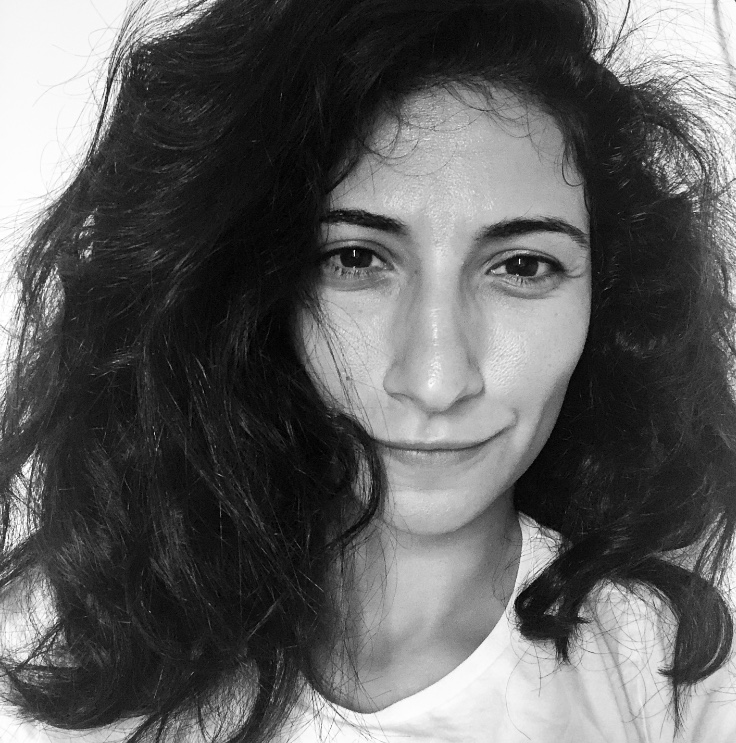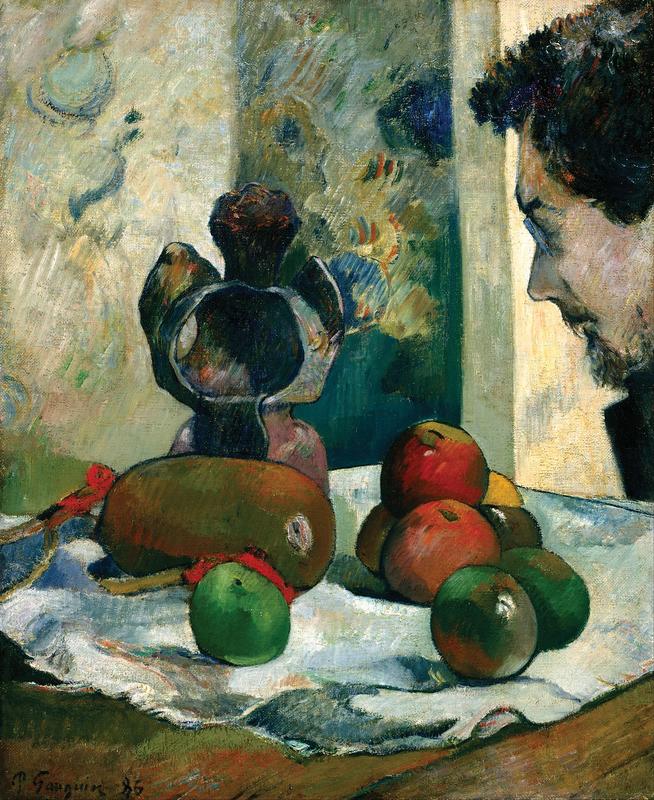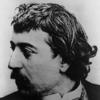More about Still Life with Profile of Laval

Contributor
Paul Gauguin’s portrait of Charles Laval may be more about Gauguin and his place in the art world than the man pictured.
The two artists met in the blissful summer of 1886, in Pont-Aven, France. It was here that Gauguin painted Still Life with Profile of Laval. Laval was an artist in his own right, though little of his work survives. Laval was also chummy with Vincent van Gogh, and, as these artists tended to do, even gifted him a self-portrait. Gauguin, who enjoyed Laval’s watercolors from a trip to Martinique, recommended Theo van Gogh to exhibit them in an upcoming gallery show.
Gauguin and Laval cemented their friendship when they started traveling together to Panama, where they caught tropical diseases. Then they moved on to Martinique after raising funds for the boat ride. And then they fell in love with the same gal and the friendship was called into question.
The young woman was named Madeleine. And she was young. Seventeen to be precise. After several attempts of wooing the wee lass, it would be Laval to win her heart, and Gauguin was left to simply express his affection for her on canvas. Gauguin was no humble loser, though. He had a cruel streak, and made strident attempts in warning Madeleine against proceeding with the wedding. Jealous much? Sadly enough, Laval died in Cairo of tuberculosis, with Madeleine's death following from the same disease four years later.
Still Life with Profile of Laval was heavily inspired by the work of Paul Cézanne. The armful of apples on the tablecloth is Gauguin’s way of nodding to the master of still-life, whom he much admired. He may also be suggesting his own place in art historical lineage, marking himself as Cezanne's successor. Gauguin was also influenced by Japanese Ukiyo-e prints and drawings, in which is was commonplace to show subjects cropped and off-center to denote spontaneity. Edgar Degas was known to use this compositional device, as well, and it's presence here may be another reference to a fellow French artist.
Gauguin was all about challenging traditions of art, and taking inspiration from peers, as well as from art from a different culture. This is not to say he was without his own influences and ideas. The large mango may be a reference to the exotic fruit enjoyed in Gauguin’s childhood, which was spent in Peru. (He also painted Among the Mangoes while he was in Martinique.) What’s more, Gauguin uses fruit to signify his humility to the spectator. What looks at first like pattern on the wallpaper is actually a camouflaged pear and turnip, which symbolize being gullible or ineffectual (the pear) and someone or something susceptible to failure (the turnip). This may not be a dig at Laval, but rather at Gauguin himself, who often referred to mediocre paintings as turnips.
The focus of the painting is an odd ceramic sculpture, made by Gauguin, which Laval is inspecting. It is a strangely shaped piece, and it's place at the center of the composition, along with the references to other artists and metaphorical allusions to failure, may suggest that the real subject of this painting is not Laval, but the struggle of creative expression itself.
Sources
- Apollo, “Gauguin: Portraits.” Accessed May 31, 2021. https://www.apollo-magazine.com/art-diary/gauguin-portraits/
- Charles, Victoria. Paul Gauguin. United Kingdom: Parkstone International, 2011.
- Dorra, Henri. The Symbolism of Paul Gauguin. Berkeley, CA: The University of California Press, 2007.
- Hallett, Florence, “Gauguin portraits, National Gallery review – me, myself and I,” The Arts Desk, October 8, 2019. Accessed May 31, 2021. https://theartsdesk.com/visual-arts/gauguin-portraits-national-gallery-…
- Klein, Adam G. Paul Gauguin. United States: Abdo Publishing, 2006. Google Books.
- Mendelsohn, Meredith, “Why is the art world divided over Gauguin’s legacy?” Artsy, August 3, 2017. Accessed June 21, 2021. https://www.artsy.net/article/artsy-editorial-art-divided-gauguins-lega…
- Pickvance, Ronald. Van Gogh in Arles. New York, NY: The Metropolitan Museum of Art, 1984.
Featured Content
Here is what Wikipedia says about Still Life with Profile of Laval
Still Life with Profile of Laval is an 1886 oil painting by French artist Paul Gauguin, located in the Indianapolis Museum of Art, which is in Indianapolis, Indiana. It depicts Gauguin's friend Charles Laval in profile with an assortment of inanimate objects, including a ceramic pot Gauguin made himself.
Check out the full Wikipedia article about Still Life with Profile of Laval












